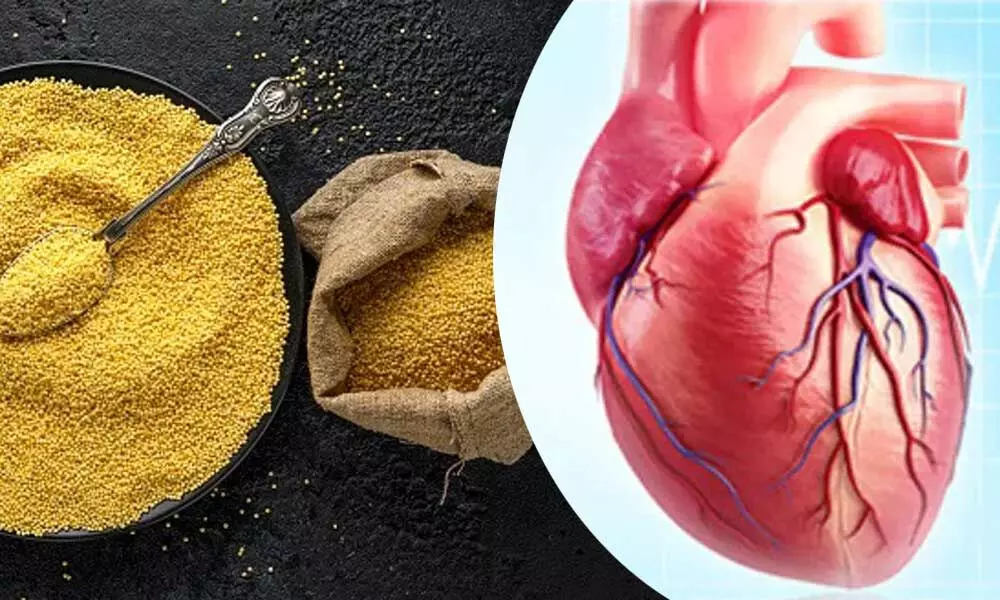Millets can reduce risk of heart disease
The study showed that consuming millets reduced total cholesterol by 8 per cent, lowering it from high to normal levels
image for illustrative purpose

Hyderabad: The consumption of millets can reduce total cholesterol, triacylglycerols (commonly known as triglycerides), and BMI, according to a new study analysing the data of 19 studies with nearly 900 people.
The study was undertaken by five organisations and led by the International Crops Research Institute for the Semi-Arid Tropics (ICRISAT).
The results, published in Frontiers in Nutrition, brings critically needed scientific backing to the efforts to popularise and return millets to diets, especially as staples, to combat the growing prevalence of obesity and being overweight in children, adolescents, and adults. The study showed that consuming millets reduced total cholesterol by 8 per cent, lowering it from high to normal levels in the people studied. There was nearly a 10 per cent decrease in low and very low-density lipoprotein cholesterol (commonly viewed as 'bad cholesterol') and triacylglycerol levels in blood. Through these reductions, the levels went from above normal to normal range. In addition, consuming millets decreased blood pressure with the diastolic blood pressure (the bottom number in the BP reading) decreasing by 5 per cent.
"We were very surprised how many studies on humans had already been undertaken on the impact of millets on elements that impact cardiovascular diseases,and this is the very first time anyone has collated all these studies and analysed their data to test the significance of the impact. We used a meta-analysis, and results came out very strongly to show significant positive impact on risk factors for cardiovascular disease," study's lead author and senior nutritionist at the ICRISAT, Dr S Anitha said. The study also showed that consuming millets reduced BMI by 7 per cent in people who were overweight and obese, (from 28.5 (+/-2.4) to 26.7 (+/-1.8) kg/m2), showing the possibility of returning to a normal BMI (less that 25 kg/m2). All results are based on consumption of 50 to 200 g of millets per day for a duration ranging from 21 days to four months. These findings are influenced by comparisons that show that millets are much higher in unsaturated fatty acids, with 2 to 10 times higher levels than refined wheat and milled rice as well as being much higher than whole grain wheat. "Unhealthy diet is a major contributor to the rising incidence of diseases, like cardiovascular disease and diabetes. The results of this study along with our recent study that showed that the consumption of millets reduced the risk of developing type 2 diabetes and helped manage type 2 diabetes, highlights a critical need to look carefully at how to most appropriately bring millets back into the diets in India and ensure this reaches the majority," National Institute of Nutrition (NIN) Director, Dr Hemalatha, said. "Obesity and being overweight are increasing globally in both wealthy and poorer countries, so the need for solutions based on healthier diets is critical. This new information on the health benefits of millets further supports the need to invest more in the grain, including its whole value chain from better varieties for farmers through to agribusiness developments," ICRISAT Director General, Dr Jacqueline Hughes, said. The study identified a number of priority future research areas including the need to study all different types of millets, understand any differences by variety alongside the different types of cooking and processing of millets and their impact on cardiovascular health. Given the positive indicators to date, more detailed analysis on the impact of millets on weight management is also recommended.

